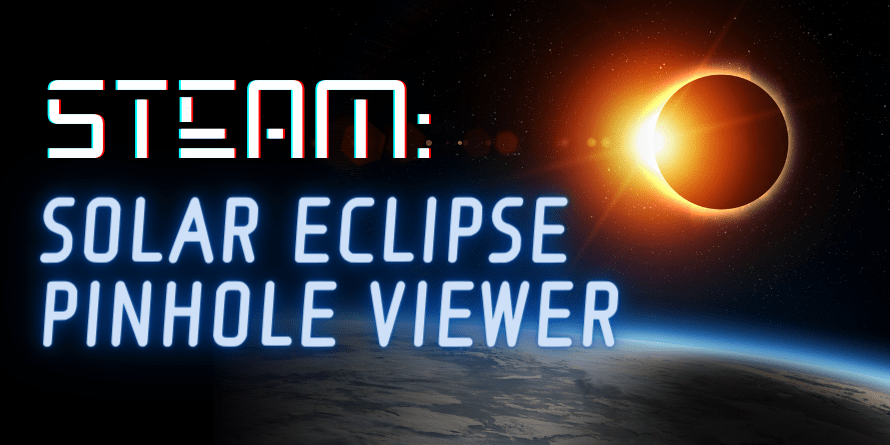
Witnessing a total solar eclipse right where you live can be pretty rare, but coming soon—April 8, 2024, to be exact—we will have the chance to witness 99% totality here in Canton.
One of the oldest recorded solar eclipses happened in modern-day Syria either on May 3, 1375 BCE or March 5, 1223 BCE. Some cultures believed eclipses could be interpreted as omens or signs from above. The first time a telescope was used to view a total solar eclipse was in France in 1706 CE.
So, how do you view an eclipse? What do you need to watch one safely? As your parents have told you multiple times, you never look directly at the sun. However, there are safe ways to watch and enjoy the upcoming solar eclipse. Follow the instructions below to create your own pinhole viewer (or watch this video) and view the eclipse safely.
Materials
- Shoebox with the lid removed.
- Piece of white paper (for example, printer paper from your home printer)
- Aluminum foil
- Pin
- Tape (scotch tape, masking tape, or duct tape should work)
Instructions
- Cover one interior (or inside) end of the shoebox with white paper to make a viewing screen.
- Cut a large, square hole out of the other end of the shoebox.
- Tape the aluminum foil over the hole you made.
- Next, take the pin and poke a hole in the center of the foil that is slightly larger than the pinhead. If you make a mistake, no worries, just grab another piece of aluminum foil and try again. Note that the smaller the hole, the sharper the focus will be.
- Practice using your pinhole viewer before the big day by going outside with your child and holding the box opening-side down. Stand with the sun behind you. You want the pinhole part pointed behind you at the sun. Your parent can help you correct the angle of the box so that the sun shines through the pinhole and the image is projected onto the white paper as a tiny circle.
Why Does This Work?
When the light from the sun’s rays enters the tiny pinhole, an upside-down image of the sun on the paper is displayed. The image is flipped because of the angle at which the rays of light enter the pinhole and continue onto the white paper. Even though the image is upside-down, you will be able to watch the eclipse safely without looking directly at the sun!
Suggestions for Enjoying the Eclipse
- Check out the NASA website where they have a great interactive map for the 2024 solar eclipse and lots of other information about eclipses in general.
- Scholastic has some great activity suggestions centered around the upcoming eclipse.
- Astronomy is another great site to check out information about the eclipse including the best places to view it from.




Add a comment to: STEAM: Solar Eclipse Pinhole Viewer